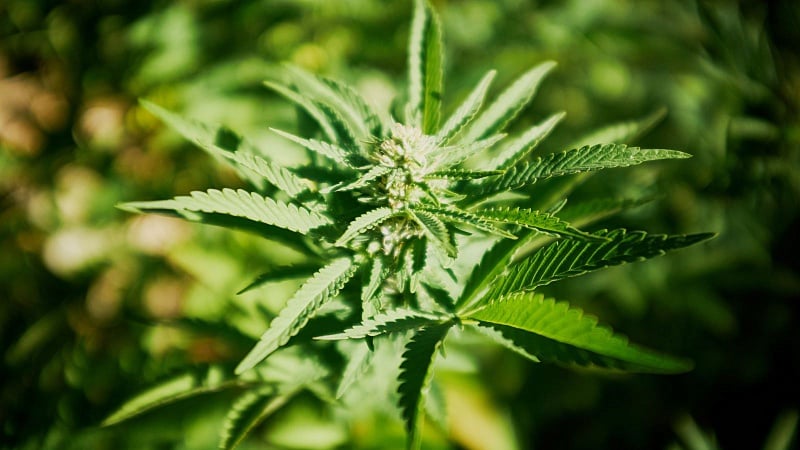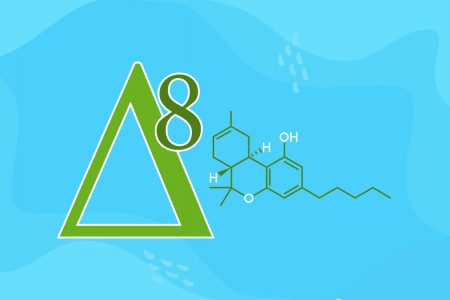Most of us are old enough to remember the days when – if you wanted to get high – you had to “know a guy.” Or, at the very least, you had to “know a guy who knows a guy.”
Things have certainly changed since then.
- It’s not only statistics that show more than half of all Americans have tried pot and that about 55 million adults – nearly one out of four – currently use it (1).
- It’s not just the fact that 59% of American adults think weed should be legal for both recreational and medicinal use, and 91% believe it should be available to patients (2).
- The three dozen states where medical marijuana is now legal, and the 15 where it’s been legalized for recreational purposes? It’s more than that, too (3).
We’re talking about the proliferation of dispensaries and weed delivery services across America. We’re also talking about the ability to buy CBD online or in nearly every strip mall; we all know that as soon as the market evolves further, those CBD vendors will be ready to stock marijuana products, too.
And now, there’s one more huge change to add to the list: companies are freely selling Delta-8-THC on the web and in their stores.
Delta-8-THC isn’t weed. At least, not exactly. But it’s extremely similar to pot…it can get you high…and at least for the time being, it’s legal in most states.
Intrigued? Great, but we have to first discuss cannabis before getting to Delta-8 and how it’s different from weed.
Cannabis and Cannabinoids

The headline first: Delta-8-THC (often referred to simply as Delta-8) isn’t what gets you high when you smoke pot. That’s Delta-9-THC.
Now, let’s unpack the details by starting with the distinction between marijuana and hemp (4). Those are the two different species of cannabis. When you buy pot, it comes from the marijuana plant. CBD is found in both types of cannabis, but it’s usually sourced from the hemp plant.
Why hemp? In short, it’s because what pot laws actually control or ban is the sale of products that contain psychoactive Delta-9-THC. The hemp plant contains almost no Delta-9, so CBD extracted from it can be sold commercially without those restrictions. But, as everyone knows, products sourced from the Delta-9-rich marijuana plant are most definitely subject to federal and state restrictions.
Next, let’s talk cannabinoids, the most important naturally-occurring substances in cannabis. There are well over 100 cannabinoids in cannabis plants (5). However, Delta-9-THC (usually just called THC) and cannabidiol (usually called CBD) are the dominant ones and also the best-known. Both are believed to have numerous medicinal properties, but only Delta-9-THC provides the intoxicating effects that weed is known for (6). Generally speaking, the higher the THC levels, the higher the user.
Other cannabinoids apparently have medicinal effects too. For example, you may have seen references to CBG or CBN while reading about marijuana or CBD; those lesser-known cannabinoids are still being studied but may help with issues like insomnia, arthritis, and gastrointestinal diseases.
That finally brings us to Delta-8-THC. It’s another cannabinoid found in both marijuana and hemp, and its molecular structure is almost identical to that of Delta-9-THC. However, it’s different than Delta-9 in several important ways.
Delta-9 vs. Delta-8
Here are the key differences between Delta-9-THC and Delta-8-THC.
- Delta-9 is found in marijuana in large amounts, but pot contains only minimal amounts of Delta-8. (Hemp contains very little of each cannabinoid.)
- Delta-9 is much more psychoactive than Delta-8. It’s estimated that Delta-8 is only half as potent.
- Delta-9 occurs naturally in the cannabis plant. Delta-8 does not; it is created when Delta-9 degrades over time. Further, Delta-8 is stable, while Delta-9 may transform into other cannabinoids like Delta-8 or CBN when it’s oxidized.
- Delta-9 interacts with the body in different ways than Delta-8, meaning its medicinal benefits are different.
To explain further, we’re going to have to get into a little biology. But don’t worry. We’ll make this as painless as possible.
All substances contain a series of molecules held together by chemical bonds. For example, the molecules in Delta-9-THC and Delta-8-THC are virtually identical, but a few of them are bonded together in a slightly different way.
That difference is crucial. We’ll explain why after we make it through the biology part.
When THC or CBD causes responses in the body – like making you high or helping to relieve a migraine – they do it by interacting with particular “signal receptors.” Those receptors, called cannabinoid receptors, are part of a network (the endocannabinoid system, or ECS) that’s spread throughout the body. There are two types of receptors, called CB1 and CB2 (7).
The existence of the ECS was, surprisingly, only discovered in the 1980s. It facilitates all sorts of normal bodily functions, like memory, metabolism, mood, and appetite. The ECS relies on “status signals,” transmitted throughout the body by molecules called endocannabinoids. When ECS receptors receive signals, the body reacts to them by starting the appropriate responses.
OK, back to THC. We’ve already described how it provides its medicinal and psychoactive effects: interacting with the same ECS receptors that regulate almost everything else that happens in the body. The interaction occurs when THC binds (or connects) to the CB1 receptors.
But because of the different construction of Delta-8-THC and Delta-9-THC, those cannabinoids bind to the receptors in slightly different ways. So that means the body reacts to them in slightly different ways.
Here’s one of the most important. Researchers believe that cannabinoid receptors can block – or reduce – the psychoactive effects of THC (8). And it appears that CB1 receptors do a better job of blocking the effects of Delta-8-THC; more of Delta-9-THC’s psychoactive effects can “get through.”
You’ve probably guessed what that means. Delta-8 doesn’t get you as stoned as the THC in marijuana does. This is because it’s much less powerful to start with, and ECS receptors block even more of Delta-8’s potential high (9).
That’s not a good thing if you’re settling in on the couch with some munchies to binge Harold and Kumar movies. But it’s an excellent thing if you want to sell a form of THC without potentially breaking any laws.
Delta-8 for Sale: Is It Legal?
The Delta-8-THC that you can purchase online or at a CBD store comes from hemp plants and not marijuana because hemp contains less than 0.3% Delta-9-THC. Any more than that, and it wouldn’t be legal to sell under the provisions of the 2018 Farm Bill that allowed the sale of CBD and other hemp products (10).
But hemp plants contain only tiny amounts of Delta-8. For that reason, it would be prohibitively expensive to extract the cannabinoid directly from the plant. That’s why some ingenuity is required.
The method most often used involves a process known as “isomerization,” CBD is actually converted into Delta-8. That’s not as bizarre as it sounds since cannabinoids are so similar in chemical terms.
(There’s also a way to convert Delta-9 into Delta-8, but since it’s derived from Delta-9-THC, it can only be sold in states where marijuana is legal.)
Delta-8 from hemp is sold in most of the same forms as pot, tinctures, oils, edibles, dabbing, and vaping. The only form it’s not available in is a smokable flower.
It’s important to note that real Delta-8 is not synthetic marijuana like Spice and K2. That would make it illegal for sale. However, it still exists somewhat of a legal gray area because it’s “synthesized” from CBD. Some lawyers say the government might read the law against synthetic pot broadly to prohibit Delta-8, too.
The Farm Bill allows the sale of hemp products with minimal Delta-9 content, but it doesn’t mention Delta-8. Even so, Delta-8 is psychoactive. For that reason, the federal government has proposed modifications to the Farm Bill, which could make Delta-8 illegal once again. There’s been no decision on those changes so far, but some states have passed their own laws prohibiting the sale of Delta-8, and some producers won’t sell to customers in those states.
Why Delta-8?
You may have already decided that Delta-8 is worth a try. However, if you’re still on the fence, here’s a look at the arguments in its favor.
The obvious one is the high Delta-8 produces. It’s not as potent as the traditional Delta-9-THC in marijuana, but it still provides a smoother, milder yet euphoric experience that will relax some and energize others. You might think of it as “pot light,” great for easing social anxiety or enjoying a mellow high while also tending to other responsibilities. It’s cheaper than pot, too.
Another plus is that it’s a legal option – at least, for now – for people living in many weed-unfriendly states.
The less obvious but still important benefits are medical ones.
- Anxiety: It’s still not clear from research whether Delta-8 can ease anxiety, but anecdotal reports certainly show that it has great promise. What is clear, though, that Delta-8 doesn’t induce the same levels of anxiety or paranoia associated with many high-THC strains of marijuana (11).
- Pain: Only one published study has been conducted to assess Delta-8’s effect on pain, and it was done with animal subjects (12). But the early results were impressive, showing great potential for the cannabinoid’s use for pain relief (13).
- Appetite: Munchies aren’t only experienced after using Delta-9. A preliminary study done with rats found that their appetite increased by 22% after administration of Delta-8; that’s even greater than the increase in appetite experienced with Delta-9-THC (14).
- Anti-Nausea: Since marijuana has been so widely used to treat the side effects of chemotherapy, it’s only natural that Delta-8 research has been conducted with human patients. And as far back as 1995, it was shown that the cannabinoid was able to ease vomiting and prevent nausea completely.
There have been no serious side effects reported due to the use of Delta-8, but there is one potential negative to consider: just like marijuana, it can trigger a drug test. Unfortunately, tests for the presence of THC don’t distinguish between Delta-8 and Delta-9.

